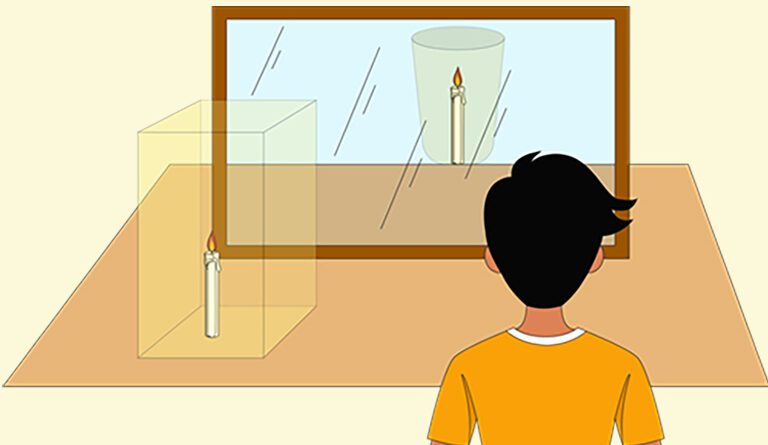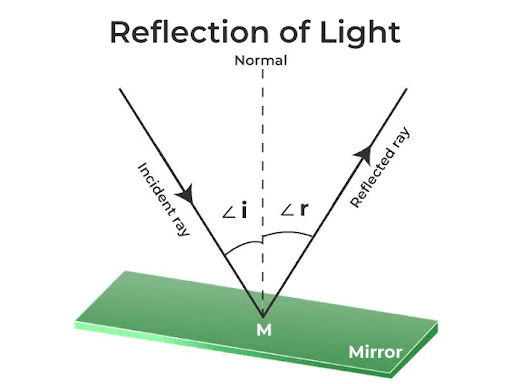The Magic of Light: Exploring Shadows, Mirrors, and More
Light Lesson Plan For Class 7
Hook
Imagine you’re walking on a sunny day and suddenly a bird flies over your head. You see its shape on the ground but not the bird itself! How did that happen?
Learning Objectives
By the end of this lesson, you will be able to:
- Understand that light travels in straight lines (rectilinear propagation).
- Explain how shadows are formed.
- Describe how light reflects off surfaces.
- Understand how a pinhole camera works.
- Differentiate between real and virtual images.
Curiosity Questions
- Why can you see yourself in a mirror but not in a wall?
- How does a camera capture images in complete darkness?
- Why do shadows look longer in the morning and evening?
Topic Introduction
Light helps us see the world. It bounces, bends, travels, and creates fascinating effects. This lesson explores how light behaves and how it lets us see, form shadows, and even take photographs using just a box with a hole!
Analogies
- Think of light as a straight pencil it doesn’t bend unless something makes it!
- Mirrors are like trampolines for light. Just like a ball bounces off a trampoline, light bounces off a mirror.
Core Concept Explanation
- Rectilinear Propagation: Light travels in straight lines. That’s why you can’t see around corners unless there’s a mirror.
- Shadows: When an object blocks the path of light, a shadow forms on the opposite side.
- Reflection: Light bounces off shiny surfaces like mirrors at the same angle it comes in.
- Pinhole Camera: A simple box with a tiny hole can project an upside-down image on a screen inside.
- Real vs Virtual Images: Real images can be projected on a screen; virtual images (like in mirrors) cannot.
Scale or Context
Did you know the light from the sun takes about 8 minutes to reach Earth? That’s how fast light travels almost 300,000 kilometers per second.
DIY Hands-on Activity Title: Make Your Own Pinhole Camera
- Purpose: To see how light travels and forms an image.
- Materials Needed:
- Shoe box.
- Aluminum foil.
- White paper.
- Tape.
- Pin or sharp pencil.
- Scissors.
- Safety Precautions:
- Be careful with sharp objects.
- Do not look directly at the sun.
- Steps:
- Cut a small square on one side of the box and cover it with aluminum foil.
- Poke a small hole in the center of the foil.
- On the opposite side inside the box, tape the white paper.
- Close the box, ensuring no light gets in except through the pinhole.
- Face the pinhole towards a bright object and look at the image formed on the white paper.
Observation/Exploration Task
Try using your pinhole camera to look at a tree, a car, or a building. What do you observe? Is the image upright or upside down?
Elaboration Activity
Role-play as light rays! One group of students can be light rays traveling in straight lines, while others act as obstacles forming shadows or mirrors reflecting light.
Explanation & Recap
Light travels straight unless reflected or blocked. Shadows form when light is blocked. Mirrors reflect light and help form images. A pinhole camera shows how real images can be created using just a hole and a screen.
Real-life Applications
- Mirrors in periscopes and telescopes.
- Shadow puppetry for entertainment.
Quick Quiz
- What is the path of light called?
- What forms when light is blocked?
- What kind of image do mirrors form?
Think-Pair-Share
Why do you think we cannot see objects in the dark? What role does light play?
Main Recap
- Light travels in straight lines.
- Shadows form when light is blocked.
- Mirrors reflect light to form virtual images.
- Pinhole cameras form real images.
Creative Challenge
Design your own periscope using two mirrors and a cardboard box. Explain how light travels inside your periscope.
More to Explore
- Research how optical fibers use light to carry data.
- Explore how solar cookers use sunlight to cook food.
Student Self-Evaluation
- I can explain how light travels: Yes / Not yet
- I can describe how shadows form: Yes / Not yet
- I can build a pinhole camera: Yes / Need help
Reflection
What did you enjoy the most in today’s lesson? What surprised you about light?
Digital Learning Enhancements
- YouTube Animation: Light
- Interactive Simulation: Bending Light – PhET Simulation
Also Read Here – Heat Lesson Plan for Class 7


